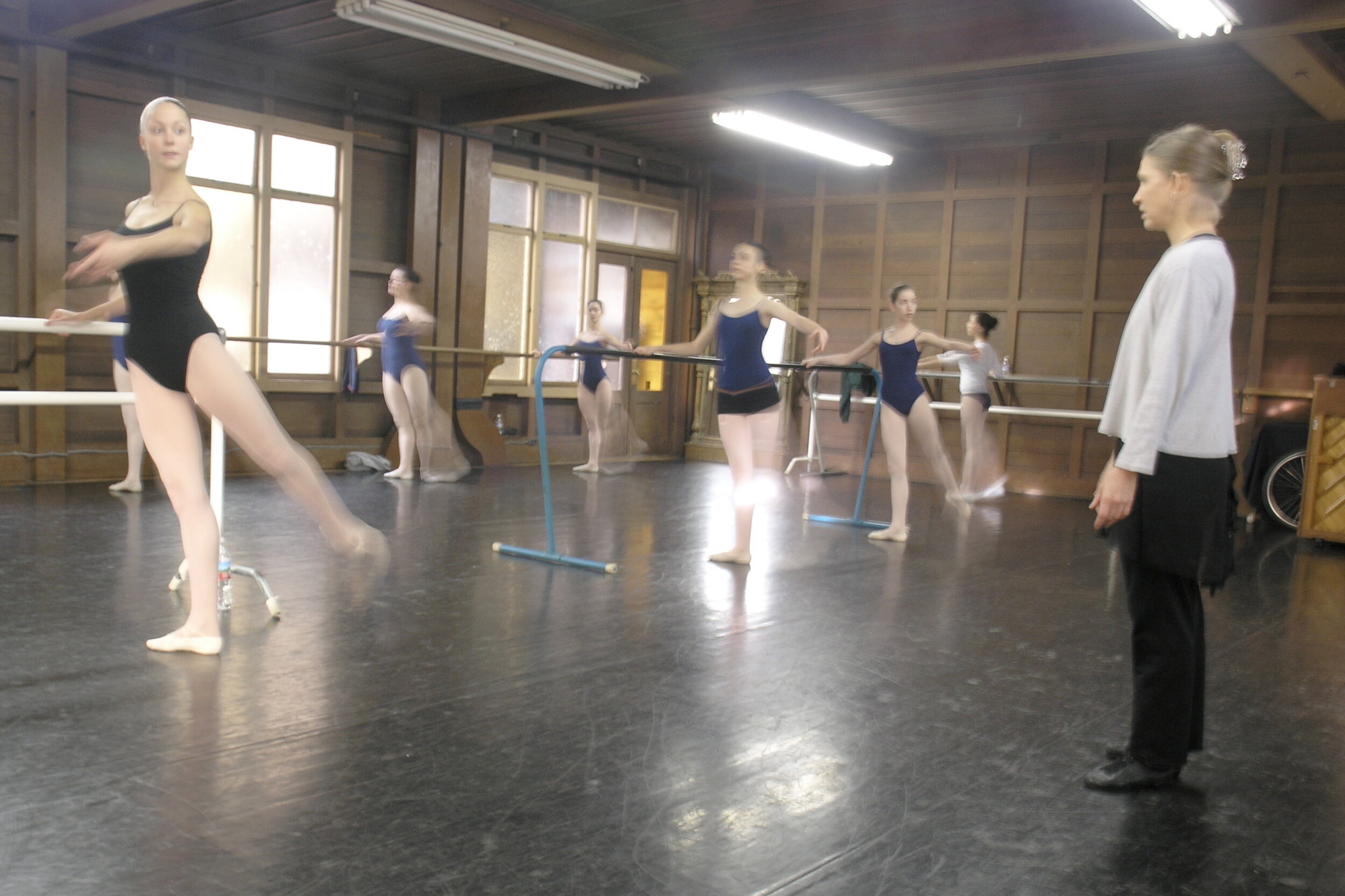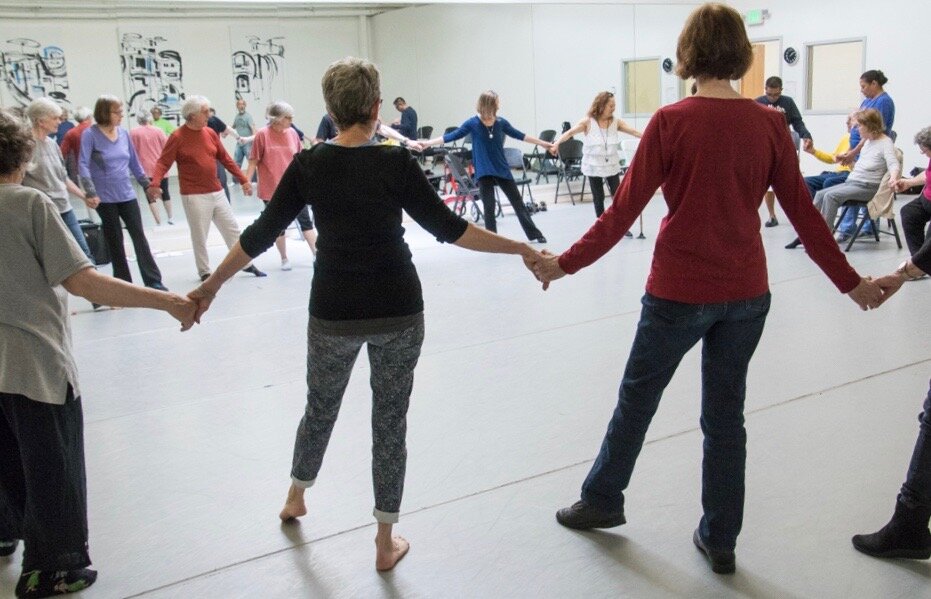Leadership Team: Susan Weber
As we come to the final month of the BBT 40th Anniversary Blog, we feature interviews with BBT’s leadership. We are delighted to begin the series with Susan Weber, BBT’s Director of Dance for PD®, faculty member, and Studio Company Advisor.
How old were you when you started dancing and why did you begin?
Wow well, I was five, and I was just always jumping and moving around. I had so much energy. By the time I was five, my mom had three kids already -- me and two younger siblings -- and the level of my energy was pretty extreme, so I think it was partially my own choice and partially her self-preservation. I often say I got serious when I was seven.
For me the most significant thing about dancing is the connection to music. I just love moving to music, and having live music is critical to me. It's one of the things I love about BBT adult classes. I would say that the other thing is the kind of non-verbal open space for imagination that exists in dancing. I can tell myself a million stories just during pliés you know. Things are going on in my head that other people might be surprised to hear and they never will, but I love that fertile ground for my imagination.
Is there a piece of advice that you received when you were a young dancer that you wish you'd listened to that perhaps you didn't?
I was a really good student and I listened, I mean I really did. I trusted my teachers, so if they told me something I took it in. As a dance student, I think I just tried my best to do what they told me to do. I believed that they had my best interests at heart. They were smart and very accomplished people themselves and they tried to help me as best they could, and I took in as much as I could have. It was pretty clean, honestly. My goal and their goals were the same, so it was pretty straightforward. I'm really deeply appreciative.
Where do you think the future of ballet training and performance is going?
Well, those really are two different questions. I think ballet training, more and more, is becoming informed by better knowledge of the body and how it works, like somatic practices and physiological research. Even the imaging techniques that exist now that didn't in the 17th century when ballet began. We understand more about how to approach this essentially unnatural movement in ways that are healthy for the body. And so there's much more understanding of a variety of physical realities for different people. We're not trying to make everyone look alike. We're not trying to force everyone's body into positions that might not be healthy. We're trying to help the body and to approach this really beautiful work in a way that won't be damaging. It's a big task, but we do know much more about how to do that now than then even when I was a child.
And then performance is really shifting. It’s moving away from the Eurocentric, racist, elitist past, which can't be denied – that’s where it started. It came out of the Court, and it was not available to most people, and that's still true to some extent. It’s still very expensive to train a ballet dancer. It's very expensive to buy a ticket to the ballet, so there are elements that are very hard to untangle to figure out how we can create more access, how we can increase the diversity of the performers, the choreographers, the directors, and the audience, but now that question is at least being asked in a really powerful way. I don't think we know the answer, so I don't have anything to tell you about where I believe it’ll wind up, but it won’t be where we came from, that's for sure. And the question I guess to me is how much of the past we can bring along, despite some questionable elements, or do we have to throw it all away? I'm not sure. I don't think anybody has the answer to that yet.
Lastly, when I was a professional dancer, which was quite a long time ago, there were dancers in ballet companies in the 70s who could say to their directors, ‘you know I'm really just a classical dancer. You can put me in Giselle, Swan Lake, Nutcracker (things that are based on classical technique). I'm not so comfortable doing the Twyla Tharp work or the Mark Morris work.’ And, at that time, that was possible. A director could honor that request or that sensibility, and there were people who started to define themselves that way. You can't do that now, everybody's got to be able to do contemporary work. You can’t come into a company and only be able to do classical ballet. Nobody would hire you. And the repertory that companies are doing is more varied, even though they still do classics. The proportion is shifting and there is much more contemporary work happening, even in the Russian companies, The Paris Opera Ballet, and Royal Ballet, I mean all of them are doing more contemporary movement.
What do you think sets BBT apart, in terms of its core class curriculum, from other schools that are similar?
Most ballet training facilities separate into one of two categories: One is pre-professional training that is focused on physiques that are suited to ballet and people who have a likely chance of having a professional career. And those places often weed students out annually, for example, if they go through puberty and their bodies change, they will be told they're not allowed to come back the next year. They're very much focused on a product.
And then you have another set of schools that are, hopefully, nurturing and welcoming of everyone, but the rigor is not there, the level of expertise of the teachers and the possibility of training to a professional level doesn't exist, meaning, their highest level students won't be that accomplished, and that's another model. There are very few places that marry those two things that have a welcoming message that anyone can come, they're not going to refuse people or later excuse them because of physical nature. And at the same time, the training is so rigorous and the expectations are so high that if there is someone in the school who's capable, they will have the opportunity to be trained to a level that, when they're finished, will give them the option of a professional career.
The understanding of what inclusion would mean has really grown with Robert’s tenure as Artistic Director. He's just extremely alert on that level and so all the opportunities, like choosing which syllabus you want to follow or which uniform you want to wear, how you wear your hair, and all kinds of things, he's just really aware and sensitive in ways that are, I think, very, very helpful to the school.
I have to say that, as a former professional dancer looking for classes to take for myself when I was in my 30s and 40s, there were not a lot of schools that provide high level work for adults, and BBT has always done that. From the very first time I walked through the door, there was a class there that was -- I won't say that all the students were at the level of professional dancing in New York, which is where I had come from – but the class was at that level, so that if you were a professional dancer you could come in and have a rigorous class. There were classes like that going on in San Francisco, but not in the East Bay.
Our adult division is way bigger than most. A lot of studios make their money with kids, so they focus all their attention on the kids, and then they have maybe one or two adult classes a week that are pretty much beginning level. BBT has always had a lot of adult classes, not as many as we have now, it's continued to grow, but if you're an adult you can come in at any level. If you're serious and you study a few times a week, then you can move up into a real beginning class from an intro class. Then we have intermediate and then advanced classes. So part of it is having that advanced level for people who are ready for that, but it's also just having the possibility of that progression and the taking of adult training seriously. It isn't like going to the gym, you know, it's an art and we provide access to that for adults in a way that most studios don't, so that is a huge distinguishing factor to me.
Now, for a few rapid-fire questions … What's your favorite ballet?
Serenade
What’s your favorite piece of music? Not necessarily for ballet, it could be anything.
Bach’s Air for the G String. It's so beautiful, so beautiful.
We've been trapped in our houses and yards for a long time, if you could perform anywhere where would it be?
Wow, let me think about this a little bit. You know, as somebody who's been a professional dancer and performed all over the place, where would I want to perform … I'm going to say the little beautiful opera house in Venice. I love European opera houses.
Who would you want in the audience for that performance?
Oh my gosh, no one!
What role or ballet would you be performing?
Okay. So I'm all by myself and no one’s in the audience, and I can do anything I want? It's a solo of Lar Lubovitch, which is the company I was in, called Scriabin Dances.
And lastly, what would you be doing if you weren't involved with ballet, or dance?
I would be a librarian with a watercolor painting practice.
Susan Weber at 19 getting ready to perform at Royce Hall in a piece by Ronnie Brosterman (UCLA Dance Company).
Lar Lubovitch's "Avalanche" in Munich, Germany, 1979
Teaching at the Julia Morgan Center for the Arts in 2004.
Dance for PD at 2640, with Luanne Wilson, 2012
Dance for PD at 10th St, 2018




